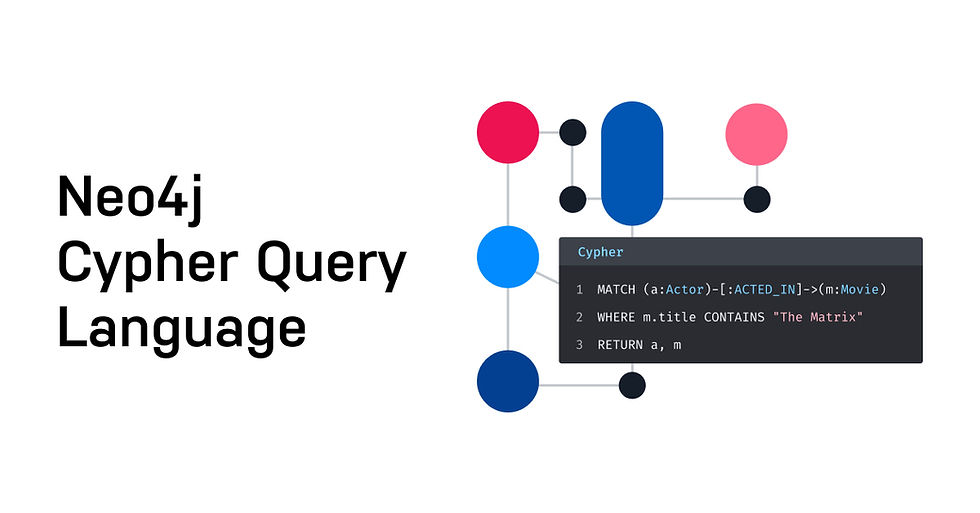
Welcome to another deep dive into Cypher Query Language! Today, we'll explore various filtering techniques that allow you to refine your queries and obtain more precise results from your graph database. Filtering is an essential skill for efficiently navigating and extracting meaningful insights from your graph data. We will cover how to filter based on properties, use logical operators, apply pattern-based filtering, and utilize list functions for more advanced scenarios.
Filtering Based on Properties
Let's start with the basics: filtering nodes based on their properties. This is a straightforward way to narrow down your search results to nodes that meet specific criteria.
Example: Retrieve Movies with a Specific Title
In this example, we'll retrieve all movies with the title "The Matrix". We use the WHERE clause to filter movie nodes based on their title property.
MATCH (m:Movie)
WHERE m.title = 'The Matrix'
RETURN mThis query will return only the movie nodes where the title property is "The Matrix".
Filtering with Logical Operators
Next, let's explore how to use logical operators to combine multiple conditions. This allows for more complex filtering criteria.
Example: Retrieve Movies Released Between 2000 and 2010
We want to find movies that were released between the years 2000 and 2010. Here, we use the AND logical operator to specify that the released year property of the movies should be within this range.
MATCH (m:Movie)
WHERE m.released >= 2000 AND m.released <= 2010
RETURN m.title, m.releasedThis query will return a list of movie titles and their release years for movies released between 2000 and 2010, inclusive.
Pattern-Based Filtering
Pattern-based filtering involves finding nodes based on their relationships to other nodes. This is particularly useful for querying complex graph structures.
Example: Retrieve Actors Who Acted in Movies Released After 2000
In this example, we'll retrieve actors who acted in movies released after the year 2000. We match Person nodes connected to Movie nodes via the ACTED_IN relationship. The WHERE clause filters the movies to those released after 2000.
MATCH (a:Person)-[:ACTED_IN]->(m:Movie)
WHERE m.released > 2000
RETURN a.name, m.title, m.releasedThis query returns the actor's name, the movie title, and the release year for movies released after 2000.
Using List Functions
List functions allow for more advanced filtering scenarios, such as aggregating and analyzing collections of nodes or relationships.
Example: Find Movies with More Than One Actor
Here, we'll find movies that have more than one actor. We first match movies and their actors, then collect the actors into a list for each movie. The WITH clause allows us to pass intermediate results to the next part of the query. We use the size function to filter movies with more than one actor.
MATCH (m:Movie)<-[:ACTED_IN]-(a:Person)
WITH m, collect(a) AS actors
WHERE size(actors) > 1
RETURN m.title, size(actors) AS NumberOfActorsThis query returns the movie title and the number of actors for movies that have more than one actor.
Filtering with Regular Expressions
Regular expressions and pattern matching operators like STARTS WITH, ENDS WITH, and CONTAINS are powerful tools for string-based filtering in Cypher.
Example: Find Movies Whose Titles Start with "The"
In this example, we use the STARTS WITH operator to filter movies whose titles begin with "The".
MATCH (m:Movie)
WHERE m.title STARTS WITH 'The'
RETURN m.titleThis query returns the titles of movies that start with "The".
Conclusion
In this demo, we've explored various filtering techniques in Cypher, including property-based filtering, logical operators, pattern-based filtering, list functions, and regular expressions. These tools will help you refine your queries and extract precise information from your graph database.
By mastering these filtering techniques, you'll be well-equipped to navigate and analyze your graph data with greater accuracy and efficiency. Happy querying!
Comments